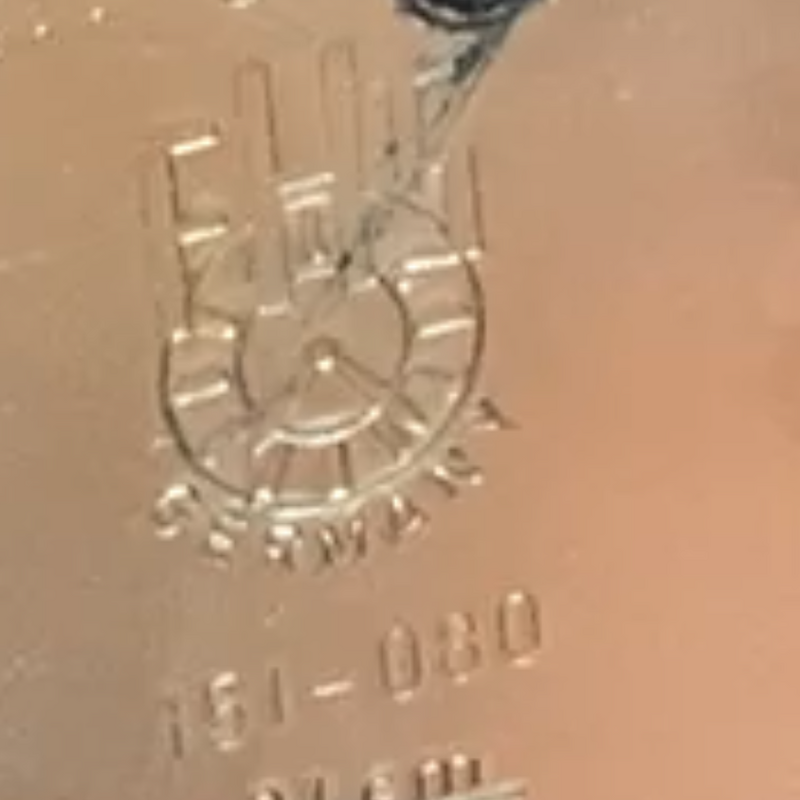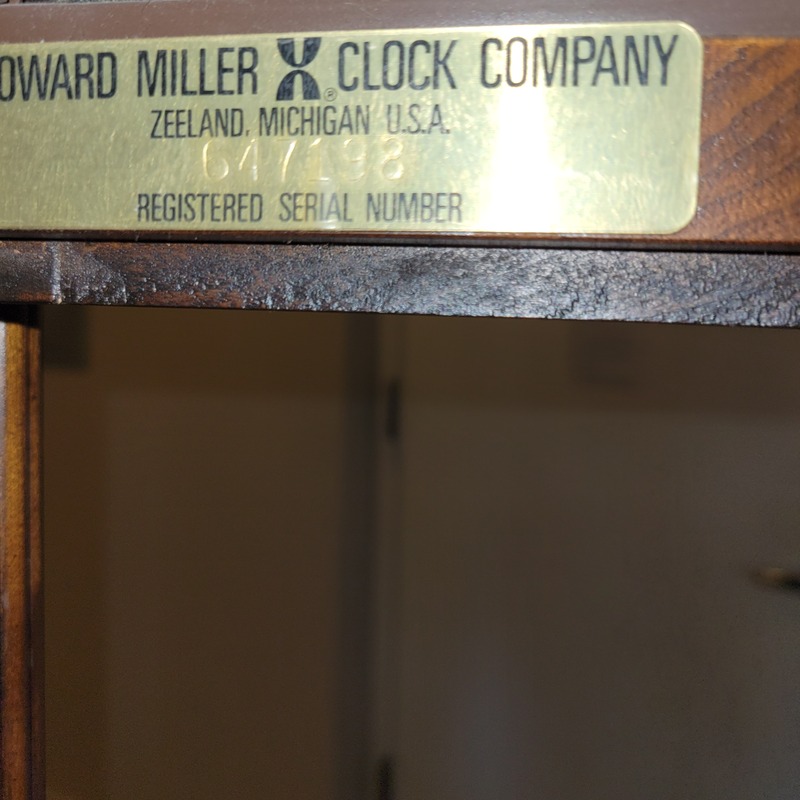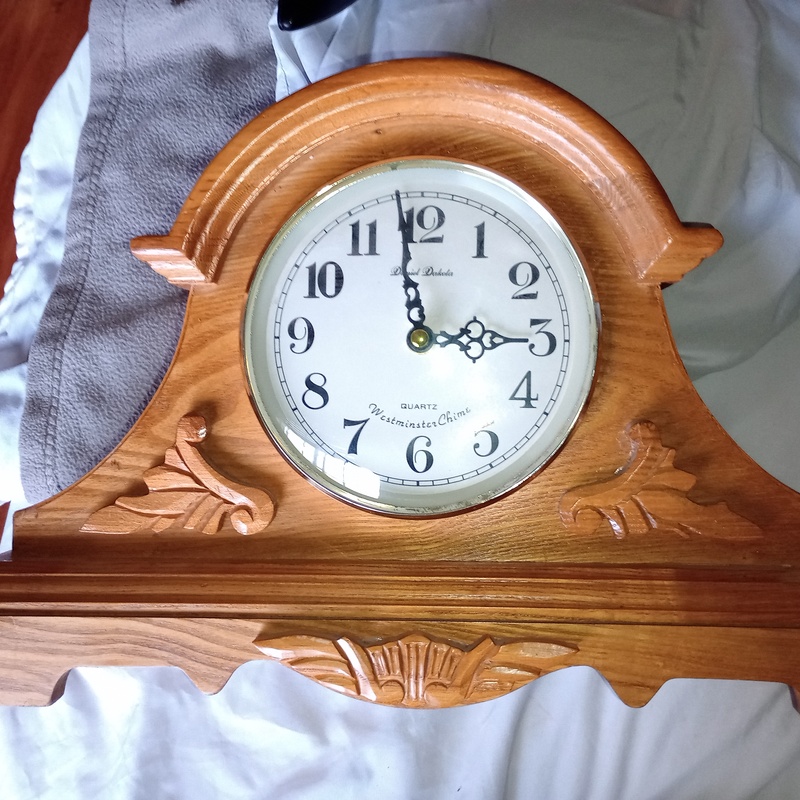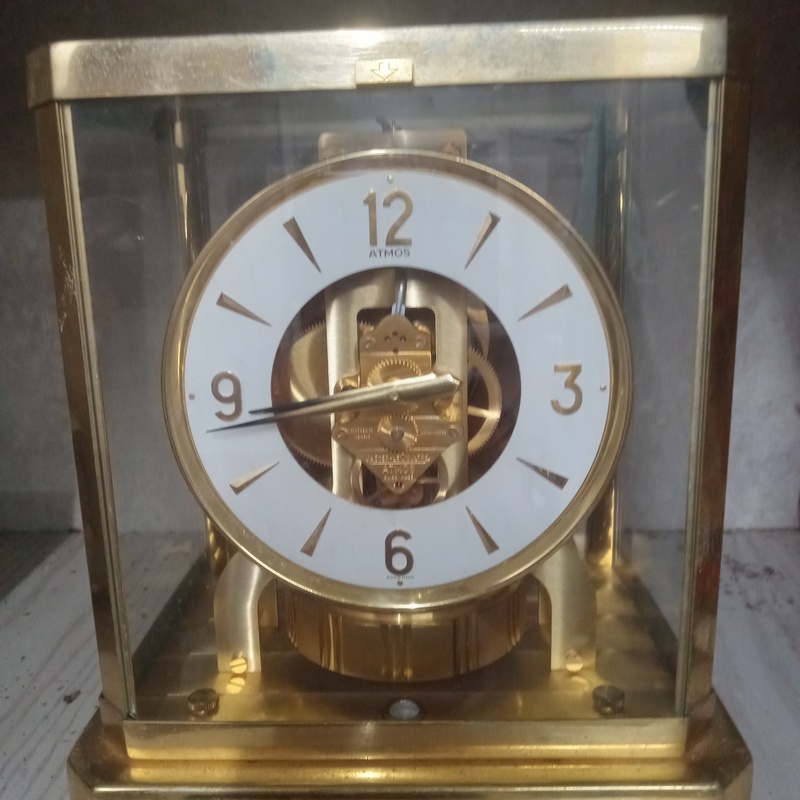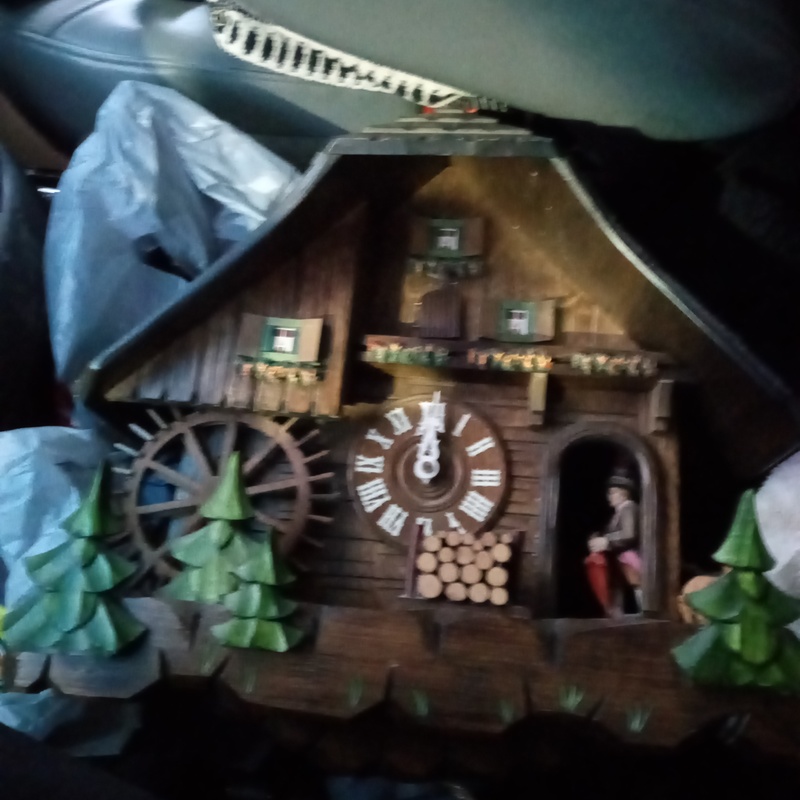



Black forest clock
It is known the clock was purchased in Germany in 1984 from Black Forest. Height roughly 40 inches, width 16 inches, depth 9 inches. Wood used is unknown. Top crown piece is removable. Clock makes chime noises on the hours.
Was inherited from my deceased grandmother who has a handwritten letter from when it was received from her uncle who bought it in Germany in 1984 for $250 dollars.
Inherited
Yes


Hello Shane,
Thank you for sending in your wall clock to mearto.com for appraisal. I shall do my best to help you with that today.
TITLE:
Stained oak (primary wood) and beech (secondary wood) spring driven, time and striking, free swinging, open well wall clock, made in the style of certain German wall clocks made at the end of the 19th century, unsigned, factory made, made in the Black Forest region of Germany, mid-20th century.
PROVENANCE:
It is known the clock was purchased in Germany in 1984 from Black Forest. Was inherited from my deceased grandmother who has a handwritten letter from when it was received from her uncle who bought it in Germany in 1984 for $250 dollars. (This does not indicate it was made in the 1980s)
CASE:
40" x 16" x 9" this is a rococo or Baroque styled wall clock originally made in the Victorian era, initially driven by weights and later in the 19th century by barrel springs. It was a popular style called a German free swinger or referred to as a 'Berliner'. The style was so popular that it continued to be made in factories located in the Black Forest throughout a good part of the 20th century. In this particular case the shaped pediment has typical Teutonic carvings of a pentagonal molding with a stylized urn and spire finial while being supported by fluted pilasters enclosing an applied wooden volute. Two smaller versions of the same finial sit on wooden plinths to either side of the pediment, each with applied pyramidal blocks and scrolls terminating the pediment at either end. The entire pediment fits into the major section of the case with wooden Mortise and Tenon type joint. The main case is rectilinear with an overhung cornice above a horizontal frieze with dentil molding and elongated pyramidal blocks. The wooden dial door has a glazed brass bezel surrounded with applied leafy spandrels and having bulbous, vasiform half columns attached to either side of the door frame. Just below there is a form of balustrade flanked by pyramidal blocks. The pedestal of the case has a flat wall bracket, a shaped apron below the dial facade with undulating apron and teardrop acorn finials to either side. Tapered oak columns connect the central section of the case with the base also with a balustrade decoration and teardrop small finials below. The pendulum bob is seen inside the open well when the clock is place on its back. . . .
DIAL: a silvered brass alloy dial with Roman hour chapter ring, sheaf of wheat half hour markers, and a closed minute ring in a scalloped style (from the Dutch) with Arabic markers placed every five minutes. The dial center has a brass colored foliate filigree ornamental patter with three winding apertures for time, strike and quarterly chimes. The machine stamped hands are in the Chippendale style. The dial is signed at the bottom made in Germany and likely dates from the middle years of the 20th century. . . .
Movement: not shown but the dial and movement sit on a plywood seatboard that slides into and sits on wooden blocks inside the case and is screwed in place. The quarterly chiming is on a series of metal rods on both sides of the movement, a design that was popular and often made by Franz Hermle & Sons. The case itself is reminiscent of many of the cases I have seen made by the Junghans Clock Company during the first half of the 20th century. Often the time barrel spring is of 14 day duration and strikes a gong inside the case on the hour and half hour. . . .
It was my pleasure to be of service to you today.
My fair market appraisal is based on actual recent past comparable sales recorded at auctions of similar German open well wall clocks. The fair market value would be approximately $175-$225 at auction today. Retail "asking prices" can, of course, be significantly higher and vary.
Best regards,
David


